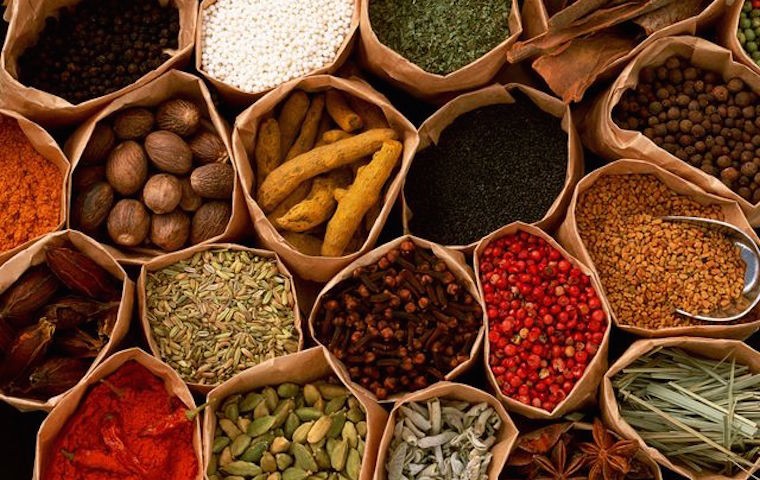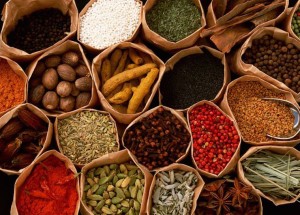Finding the right wine to drink with your food is easy, relatively speaking, if you’re dealing with European flavours. A recipe’s origins should give you a clue as to the kind of wine that will work with it. Imagine a dish of long, slow-cooked lamb, then add Mediterranean flavours of rosemary, tomatoes and garlic. It doesn’t take much effort to dream up an accompanying bottle of Spanish tempranillo or a herby grenache blend from southern France. Spaghetti alle vongole suggests a dry Vermentino, while the same pasta cloaked in rich ragu cries out for a sangiovese or a barbera. But what do you do if you’re eating Asian? After all, it’s not as if there’s a long tradition of drinking (or producing) wine in countries like India, Japan, China or Thailand.
Over the next few weeks, I’m going to be making a few suggestions to help you get the most out pairing wines with Asian flavours, starting with dishes from the Indian subcontinent.
There can hardly be a town in the UK without a curry house or two, and our love affair with Indian spices has deep roots that lie in the intertwined histories of the two countries. But, as we’re increasingly becoming aware, it’s a mistake to talk about ‘Indian food’ as if there was any kind of homogeneity to the dishes cooked in this vast country. As you might imagine, in a country the size of Western Europe (and then some), culinary traditions are varied. Meat eating is more prevalent in the northern states than it is in the south, where dishes are focused around vegetables and seafood. The spices used in the north are rich and dark, while the flavours of the south rely more on coconut, tamarind and fresh herbs.
India has such a complex food culture that it’s tempting just to shrug and reach for a bottle of beer, but a few simple guidelines can help steer your wine choices in the right direction. Probably the first, and most important thing to remember is that tannin and hot spices are implacable enemies. The combination of chilli and tannin just seems to strip the fruit right out of a wine, and the only sensation you’ll really feel is burning alcohol. Not pleasant.
As a general rule, off-dry wines (those with a little bit of sweetness) seem to work best with Indian dishes, especially if the wine in question is unoaked and relatively modest in terms of alcohol levels (neither oak nor high levels of alcohol are entirely comfortable with spices, either). If off-dry whites don’t do it for you, rosé is another versatile all-rounder as it often has plenty of thirst-quenching freshness and some ripe fruit, but it lacks the structure to square off against the chillies.
The mellow spicing typical of northern Indian meat curries (think lamb rogan josh or saag gosht) is most at home with supple, fruity, unoaked reds. Beaujolais is a good place to start looking, but a bright-fruited New World pinot noir would also fit the bill. If you want to think a bit outside the box, how about a juicy Valpolicella from northeast Italy or a frappato from Sicily? In all cases, I’d suggest you avoid oaked wines – pick a simple, uncomplicated wine without too much structure instead. If you know that spicing levels are going to be relatively low – or you’re incorporating a lot of tandoor-cooked meat into your meal – you could even opt for a grenache-based blend from the southern Rhône or northern Spain (or a ripe GSM blend from southern Australia). Again, you don’t want to go for an ultra-concentrated, high-alcohol version – just something juicy and quaffable.
Creamy curries from northern India, especially those with a hint of chopped nuts or even dried fruit (a chicken korma, for instance) might fare best with a voluptuous white. Condrieu would be my wine of choice here, if I was feeling rich, or possibly an ample white Burgundy – otherwise I’d happily settle for a New World viognier or chardonnay. You might also give a thought to an Alsace-style pinot gris (by Alsace-style, I mean something with more richness and fruit than a neutral, Italian-style pinot grigio), or even an off-dry Anjou white.
Moving further south tends to up the chilli quotient of the food – the southern states are home to the fiery flavours of lamb vindaloo and other equally chilli-laden dishes. Authentic vindaloo is seldom as hot as the searingly spicy versions served as dare fodder in British curry houses, and is as noted for its sharp vinegary note as it is for its heat. I think you need a wine with a bit of character and body to stand up to the punchy flavours of a vindaloo, and good acidity would help it hold its own ground. In short, what’s called for here is a Piedmontese barbera (although a light Chianti or other sangiovese-based wine might work well, too).
The south is also known for its coconut-rich sauces (think Malabar prawn curry or fish molee). Crisp whites with a bit of aromatic richness can work well here – Italian vermentino (southern France’s rolle) or a greco di tufo or a fiano di avellino from Campania are worth considering, as are Argentine torrontes – as you need a bit of exuberant fruit and vibrant acidity to cope with the rich sweetness of the coconut.
Wines to avoid with Indian food: Keep your best bottle of Bordeaux stashed away when launching into an Indian feast. Not only will it have too much tannin and too much oak, those herbaceous flavours won’t do your meal any favours either.
Click here for my article on matching wine to Thai dishes, and here for the piece on Japanese food.

